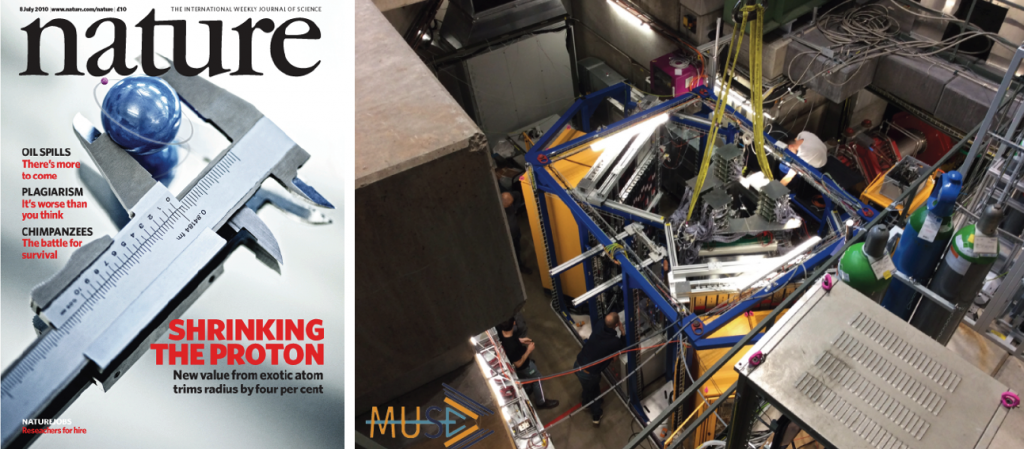The Proton radius puzzle

The study of the proton charge radius (rp) has been historically instrumental towards the understanding of the nucleon structure. The disagreement of the rp as determined using different methods of extraction startled the physics world and gave rise to the proton radius puzzle. Our group is working on a unique experiment, the MUSE Experiment at PSI, that will be the first to extract rp from a simultaneous measurement of μp and ep scattering, thus offering critical answers to the proton radius puzzle.
Proton Polarizabilities

The polarizabilities of a composite object are fundamental characteristics of the system, just as its mass or shape. Among all the known properties of the nucleon, polarizabilities have the unique status of characterizing the nucleon dynamical response to an external electromagnetic (EM) field, describing
how easy the charge and magnetization distributions inside the nucleon are distorted by the EM field. Our group is leading the VCSC collaboration at Jefferson Lab, an experimental effort that will offer the highest precision measurement of the electric and the magnetic generalized polarizabilities of the proton, addressing a number of open questions in regard to the proton’s response to an EM field.
Origin of the proton mass

The National Academies of Sciences, Engineering, and Medicine (NAS) identified three high-priority science questions to understand the hadron structure in their report “An Assessment of U.S.-Based Electron-Ion Collider Science”. The first of the three questions is “How does the mass of the nucleon arise?”. Our group is spearheading an experimental program that aims to decode the mass-budget of the nucleon.